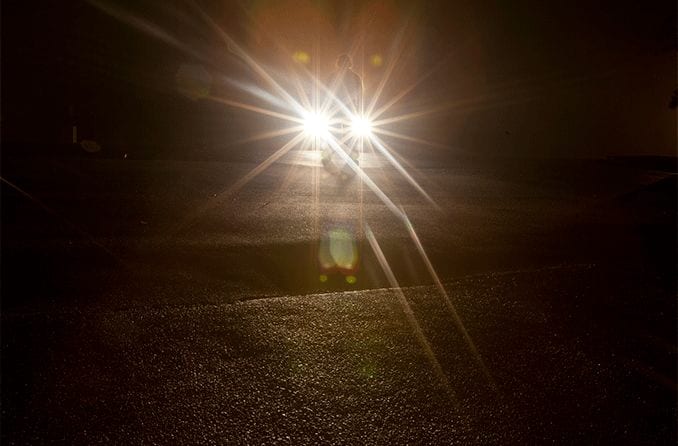Before experiencing a seizure or migraine, people often experience a wave of sensory disturbances, ranging from nausea and hallucinations to feelings of numbness.
This group of symptoms is known as aura — a warning sign that can last anywhere from a few moments to an hour before an event such as seizure or migraine occurs. Aura is actually considered part of a seizure, and is also referred to as a simple focal seizure or partial seizure.
Aura can interfere with all of your body’s senses, whether it be vision-, sensory-, speech- or language-related. Some people may not have aura before a migraine (it affects about one in three migraine sufferers) or a seizure, while others may be well acquainted with its effects.
Symptoms of aura
There are a number of symptoms of aura that can affect your body in varying ways, including:
Nausea
Fear and anxiety
A feeling of separation from your body
Tingling or numbness on one side of your body or face
Problems with speech such as mumbling or slurring
Auditory hallucinations such as hearing voices and other noises
Olfactory hallucinations such as unusual smells
Visual disturbances
Symptoms can occur separately or in combination. If you experience migraines or seizures often, you may find that you encounter similar warning signs on each occasion, although this is not the case for everyone.
How does aura affect vision?
Aura can affect your eyesight in several ways, often causing changes and disturbances in your field of vision. Some visual effects of aura include:
Distorted shapes and sizes of objects
Exaggerated brightness
Zigzag-patterned lines
Spots that spread or move around slowly
Dark or blind spots
SEE RELATED: Ocular migraines and visual migraines explained
How long does aura last?
Aura may be as short as a few seconds or last up to an hour ahead of a migraine or seizure.
Many who have migraine aura may have symptoms for 20 minutes to an hour, though it can be different for each person and each experience.
Some seizures come with aura as a warning sign. This is considered part of the seizure itself and is also referred to as a simple focal seizure or partial seizure. It is important to note that seizures can occur without aura as well.
What causes aura?
When a migraine advances, the nerves in the brain become increasingly activated. The hyperactivity in the nerves can produce aura symptoms that are visual-, sensory- or speech-related, depending on the area of the brain in which the nerves are located.
According to experts, aura is not caused by a lack of blood flow to the brain.
Epileptic auras (seizures with aura) do not always have a direct known cause. They may be associated with your family’s medical history, or with conditions such as:
Using drugs or alcohol
Infections
Head injuries and trauma
Progressive brain disease
Brain tumors
Alzheimer’s disease
LEARN MORE: Ocular migraines
What to do if you experience aura
Aura related to seizure and migraines can have an impact on your vision and your overall health, even if it is just temporary. Monitor your symptoms and call a doctor if they become severe or lead to a migraine or seizure.
You should also contact your health care provider if you have symptoms such as tingling or numbness in one side of your body or changes in your alertness or consciousness during the aura.
Migraine with aura increases your risk of stroke, making it critical to see a doctor if you begin to experience the condition.
How is aura treated?
Migraines with aura are treated with preventive and acute medication, whether prescribed or recommended over-the-counter:
Preventive medications can include beta-blockers, anti-epileptic medicine or tricyclic antidepressants
Acute medication can include over-the-counter remedies such as pain relievers, migraine-targeting medications and anti-nausea medicine
Seizures are treated with:
Anti-seizure (anti-epileptic) medication
Surgery
A vagus nerve stimulator (VNS), a device that is implanted in the chest to send electrical energy to the brain through the vagus nerve in the neck
The type of medication prescribed or recommended for you depends on your medical history and other medications that you are taking. Medical devices and surgery may be required for those whose problems are severe or occur continuously.
If you witness someone having a seizure, call for medical help immediately.
Other types of aura
Migraine and epileptic auras are medical conditions, very different from the spiritual auras associated with energy fields that surround humans.
These energy-based auras are identified and interpreted by professional and self-practitioners of reiki, a meditative form of treatment and therapy that incorporates life force energy. Although this practice is performed by many, some do not hold the same beliefs in reiki (or in human auras).
Reiki practitioners work to detect an aura, a light or colorful energy given off by each person’s vibrational energy, whether it is positive or negative. It is then referred to in therapy sessions for helping heal various conditions by means of relaxation, relieving stress, reducing fatigue and increasing overall positive vibes.
Reiki therapy is sometimes used as an extension of medical treatment for certain conditions, as it promotes calmness, positivity and healing energy to patients. However, it is not a substitute for professional medical treatment.
Be sure to consult a doctor for the appropriate treatment of any given condition, including migraines and seizures and the auras that may or may not come as warning signs before they occur. The practice of reiki may or may not be encouraged by your health care provider to support any treatment you may receive.
READ NEXT: Headache behind your eyes










